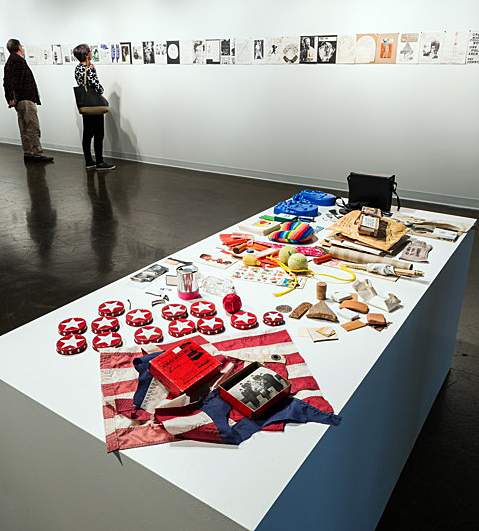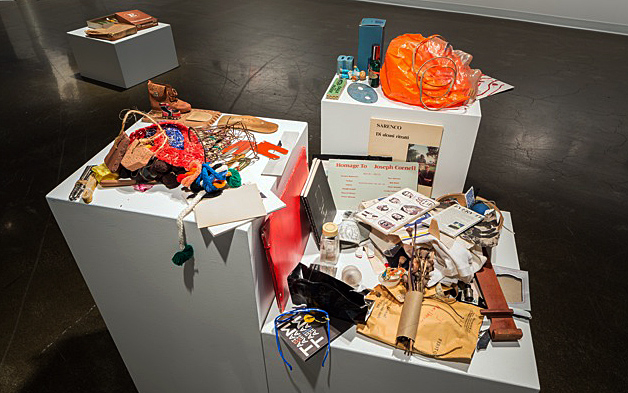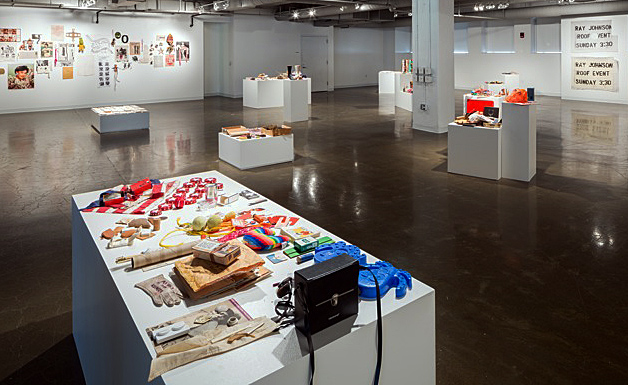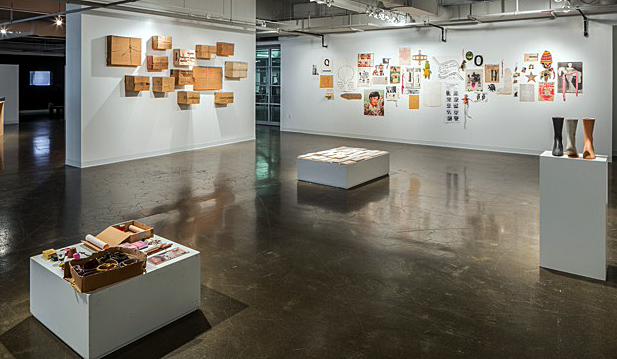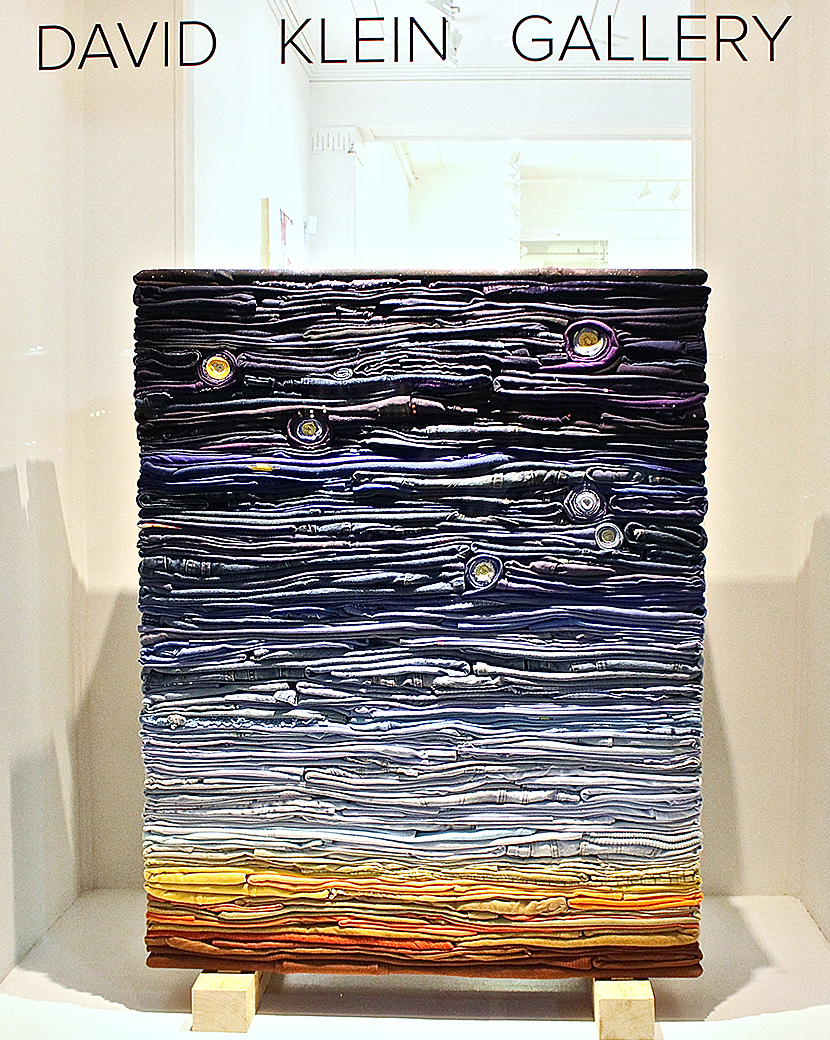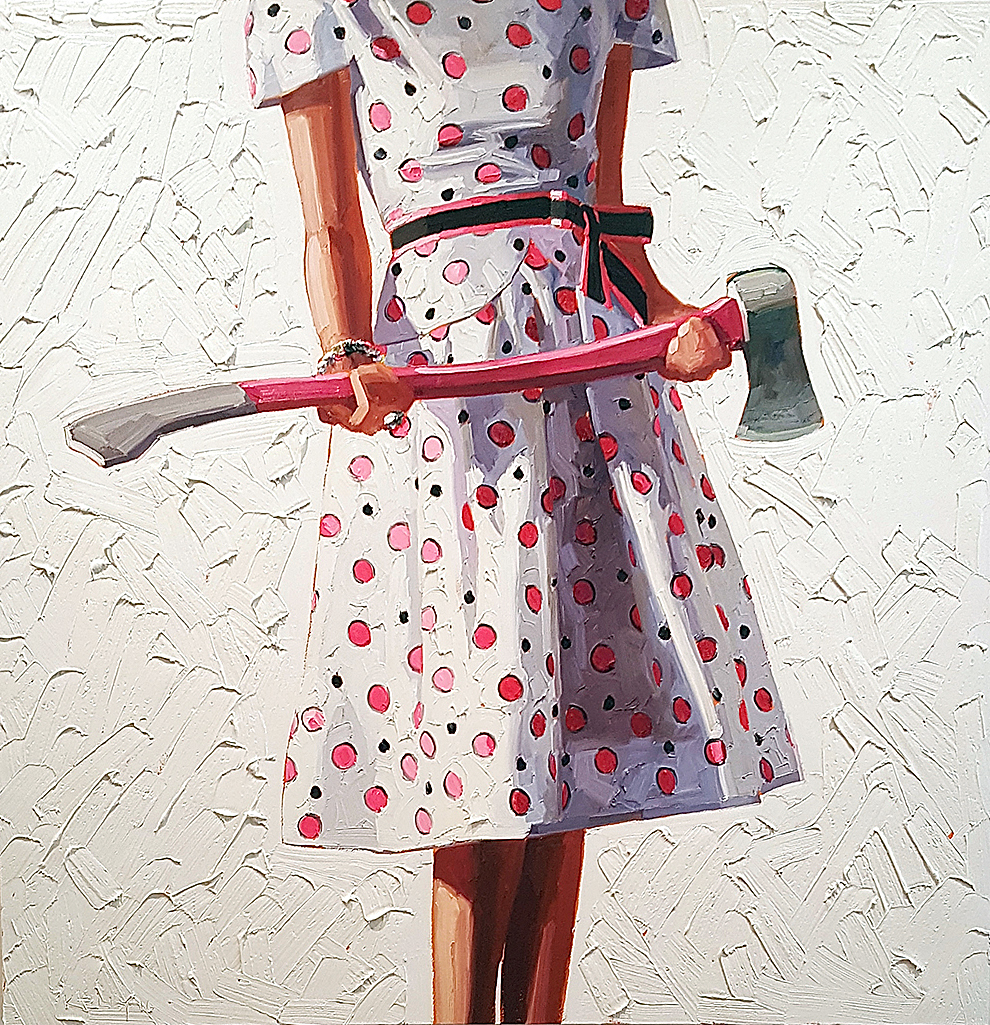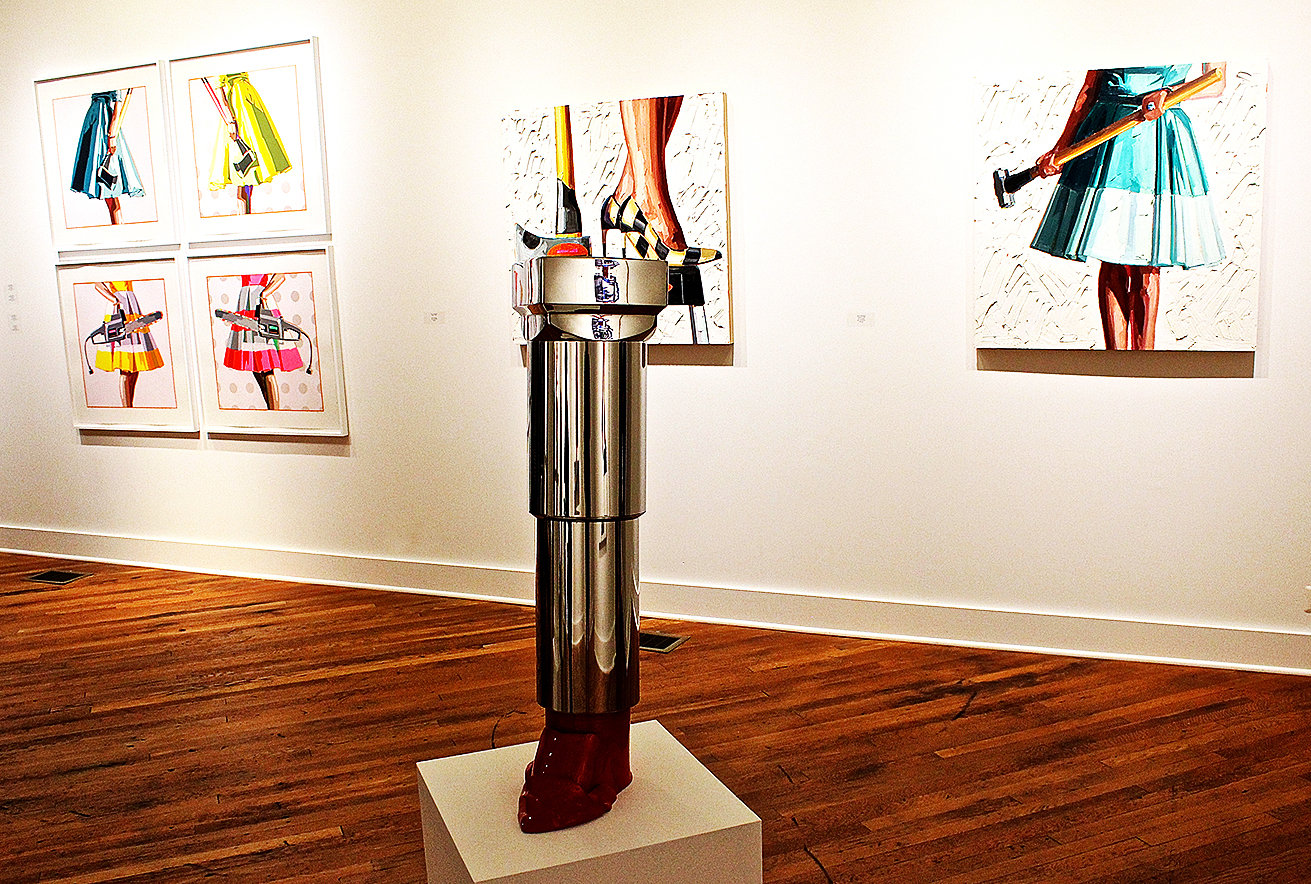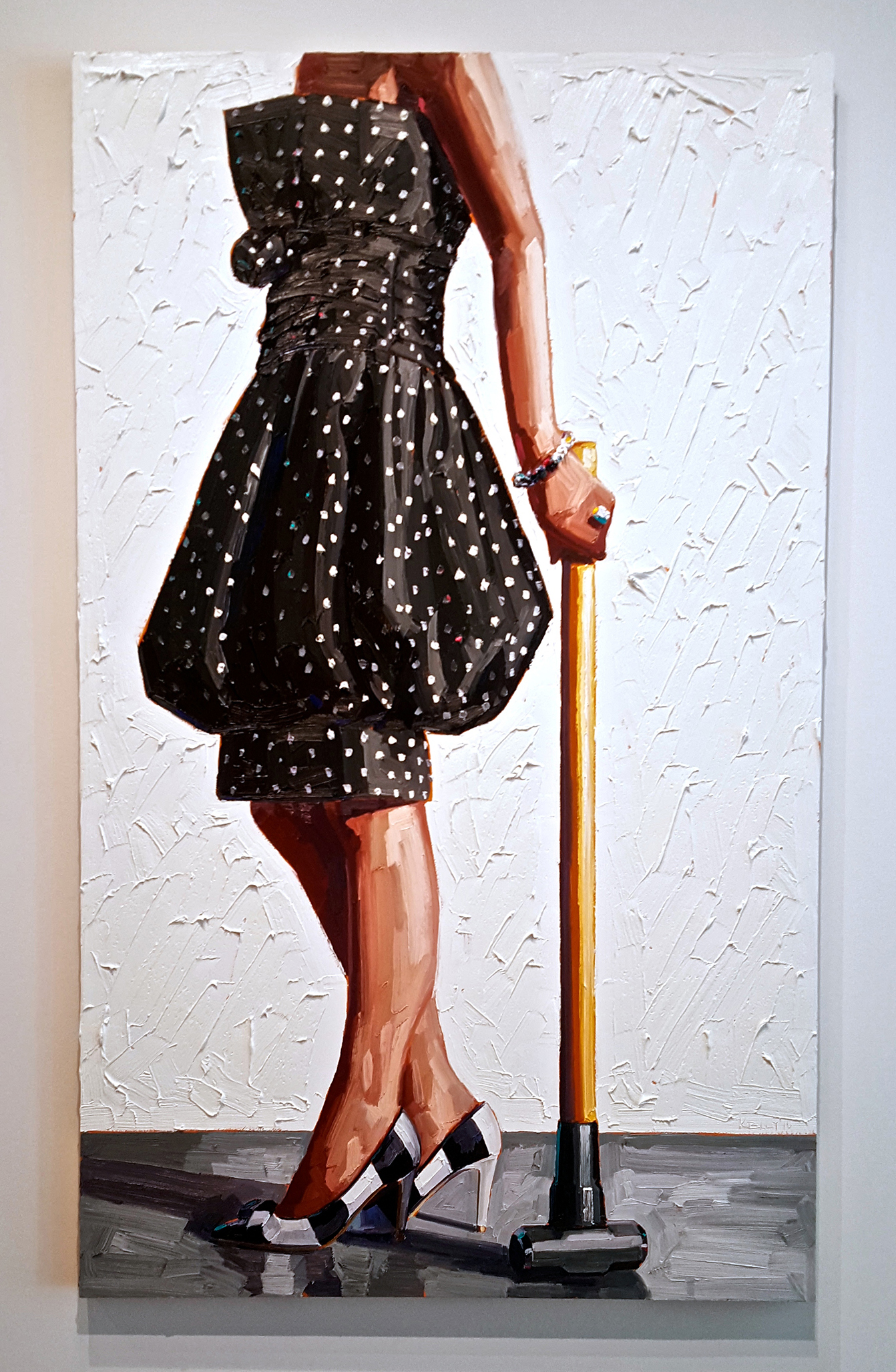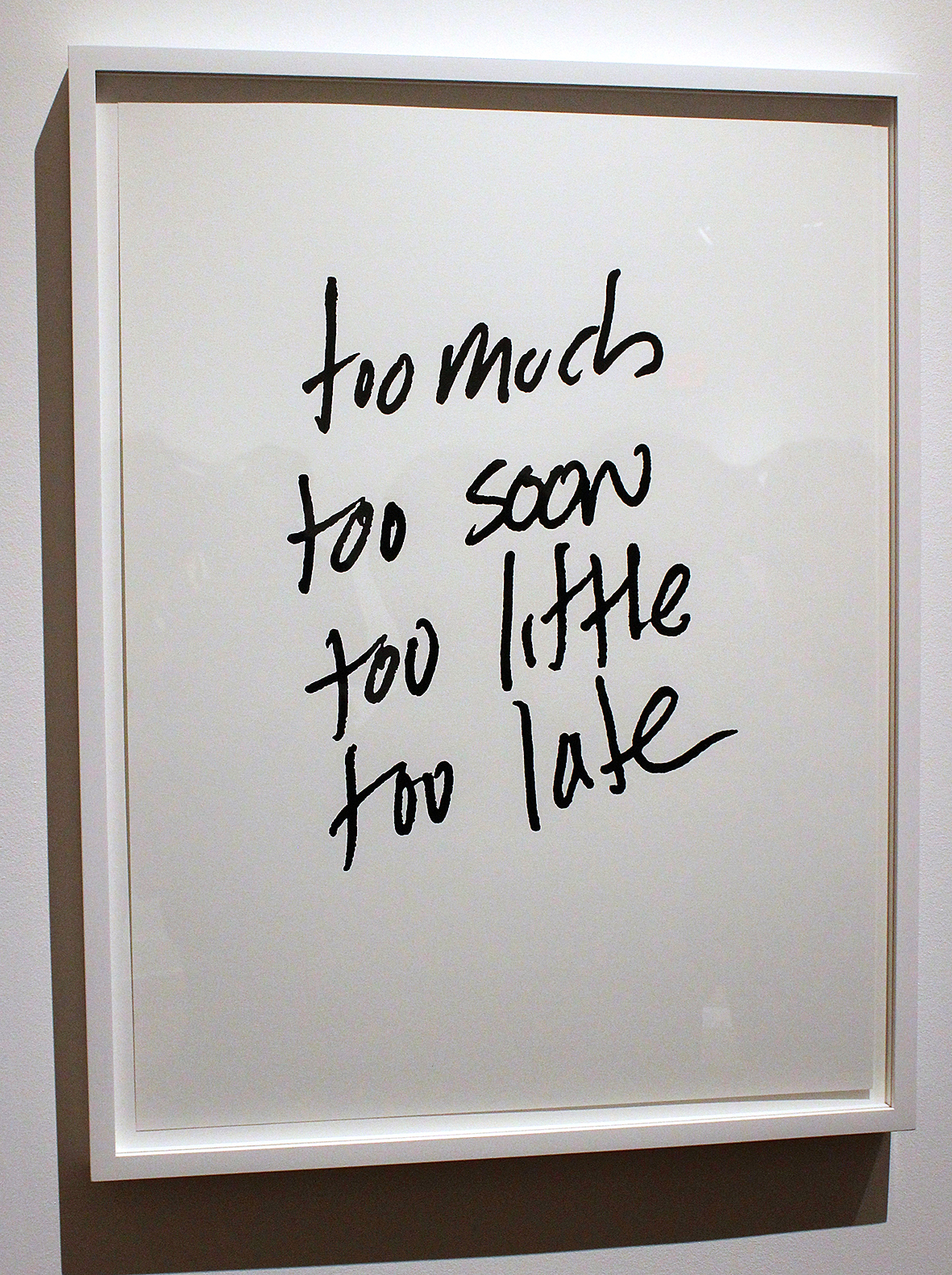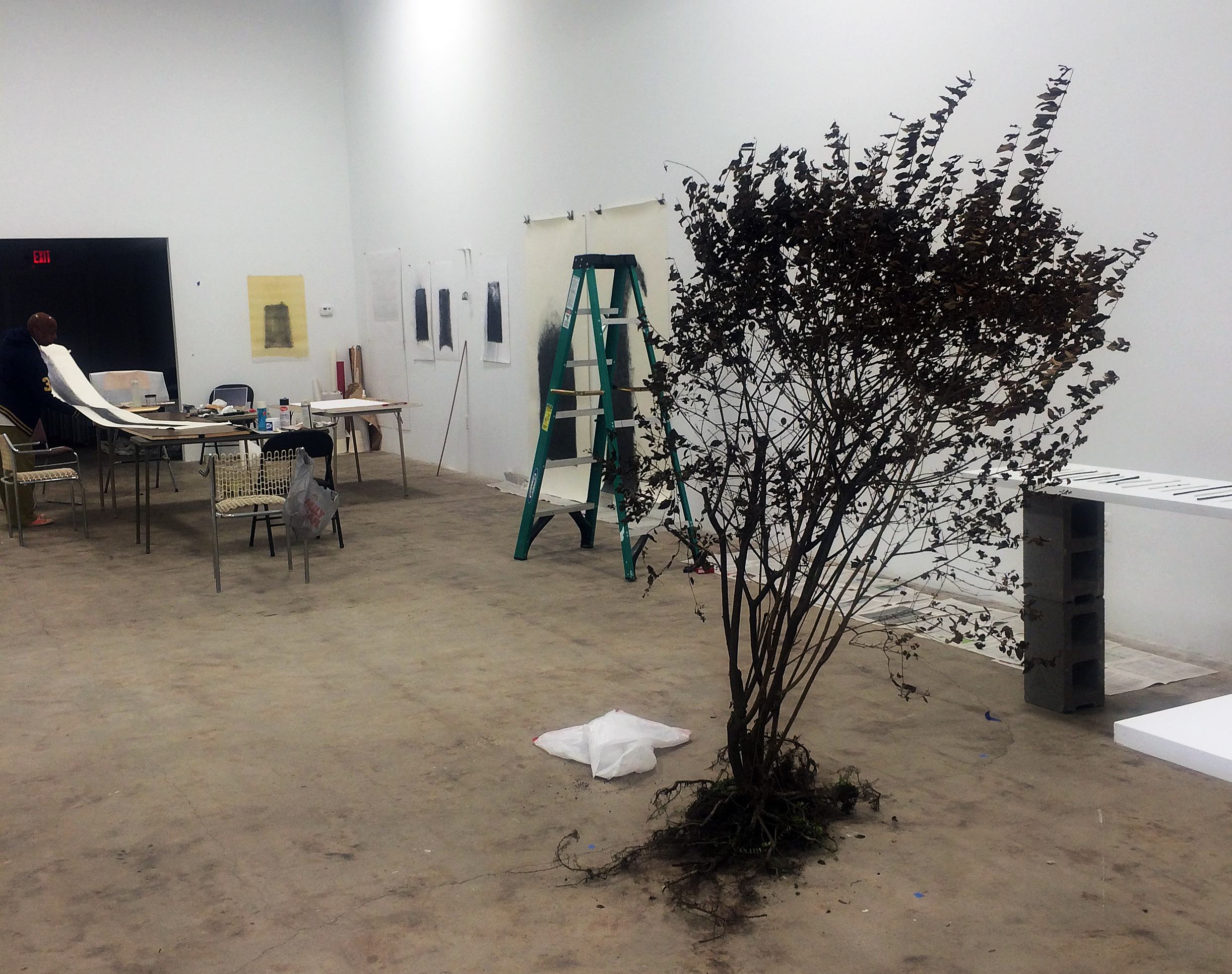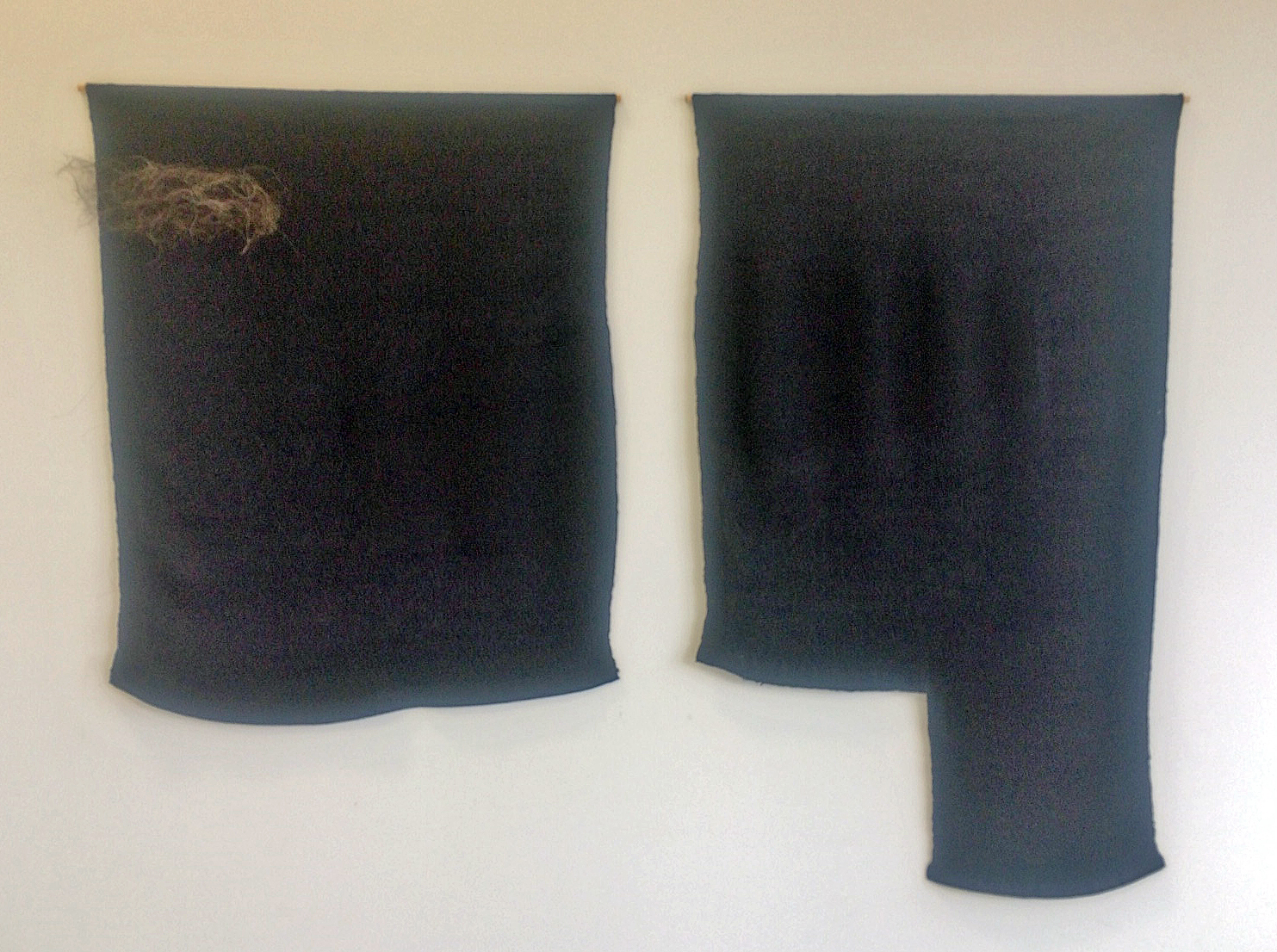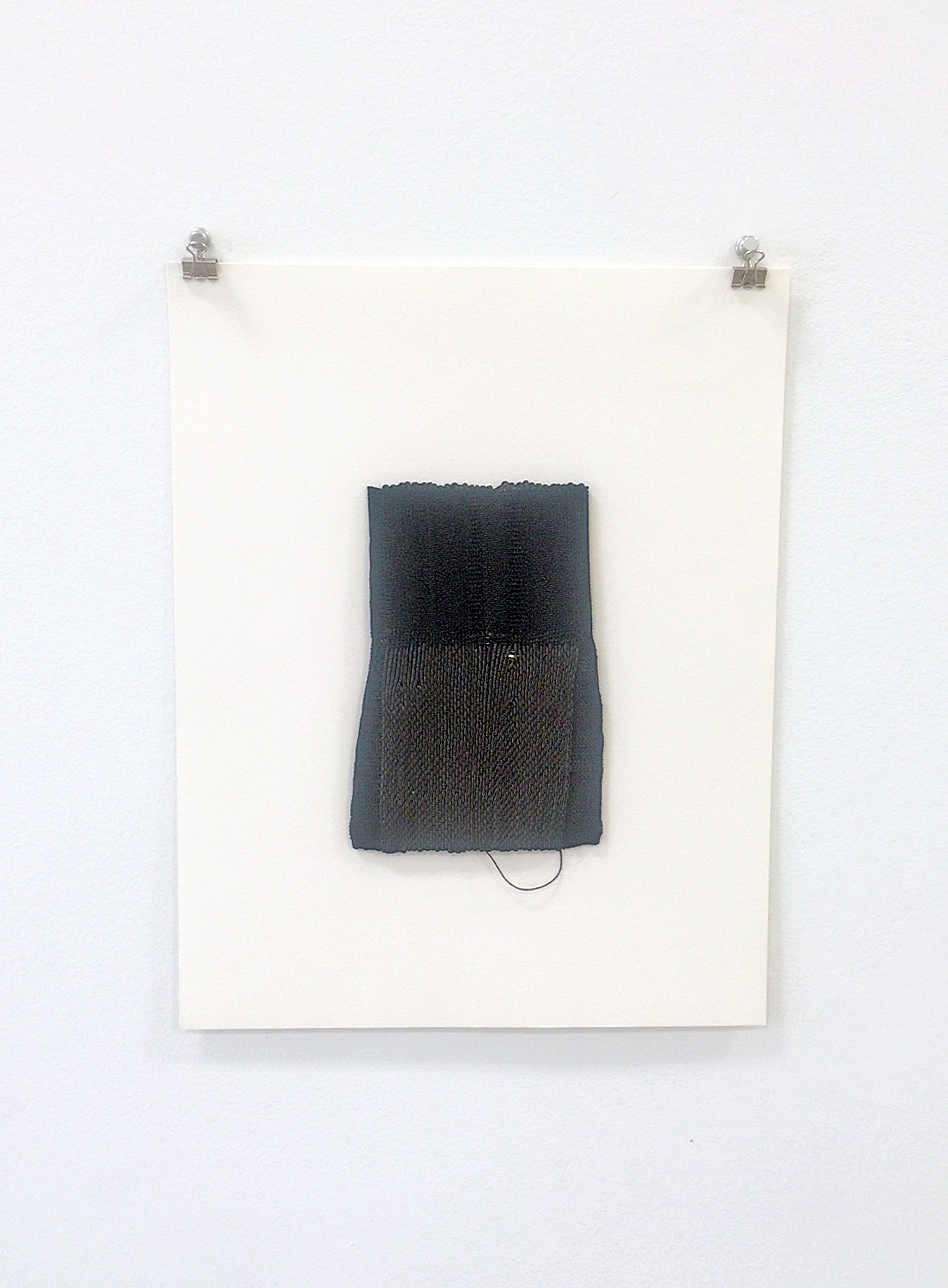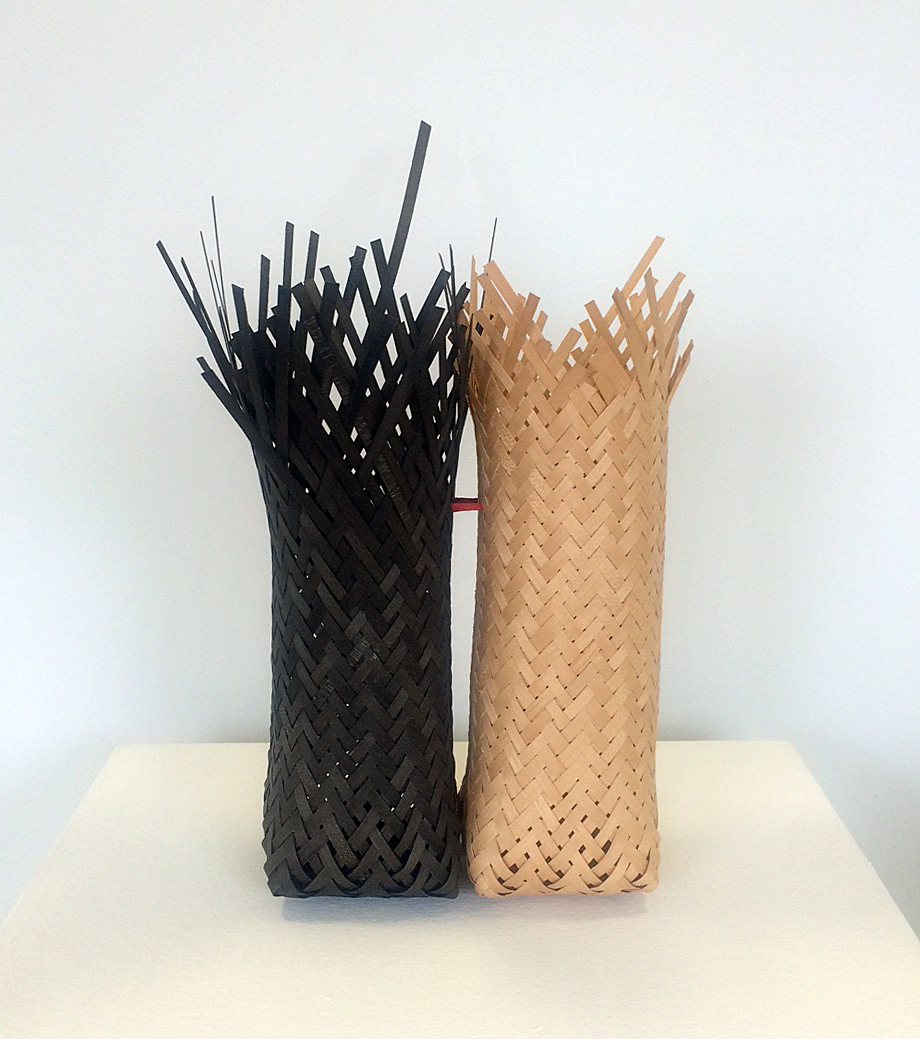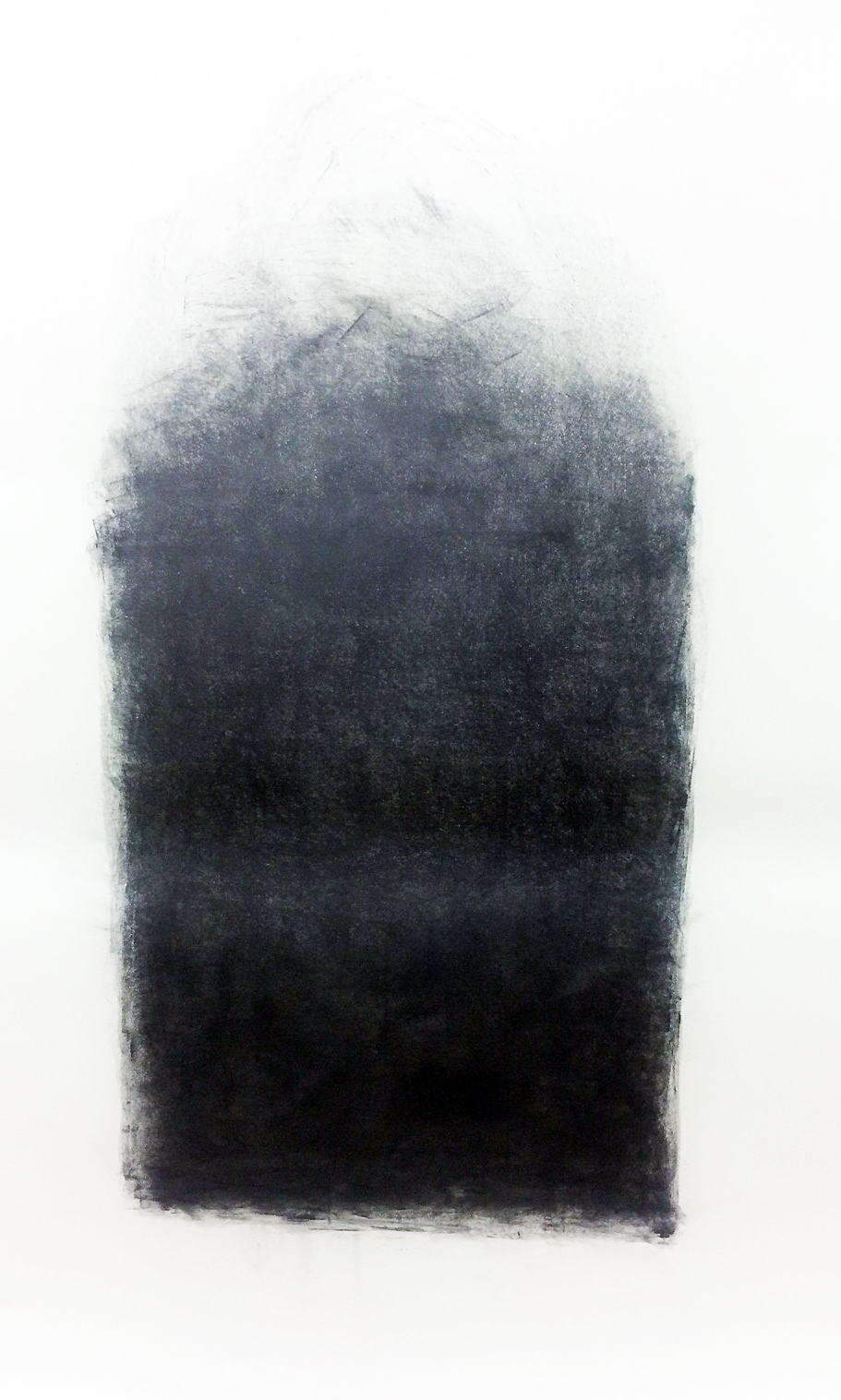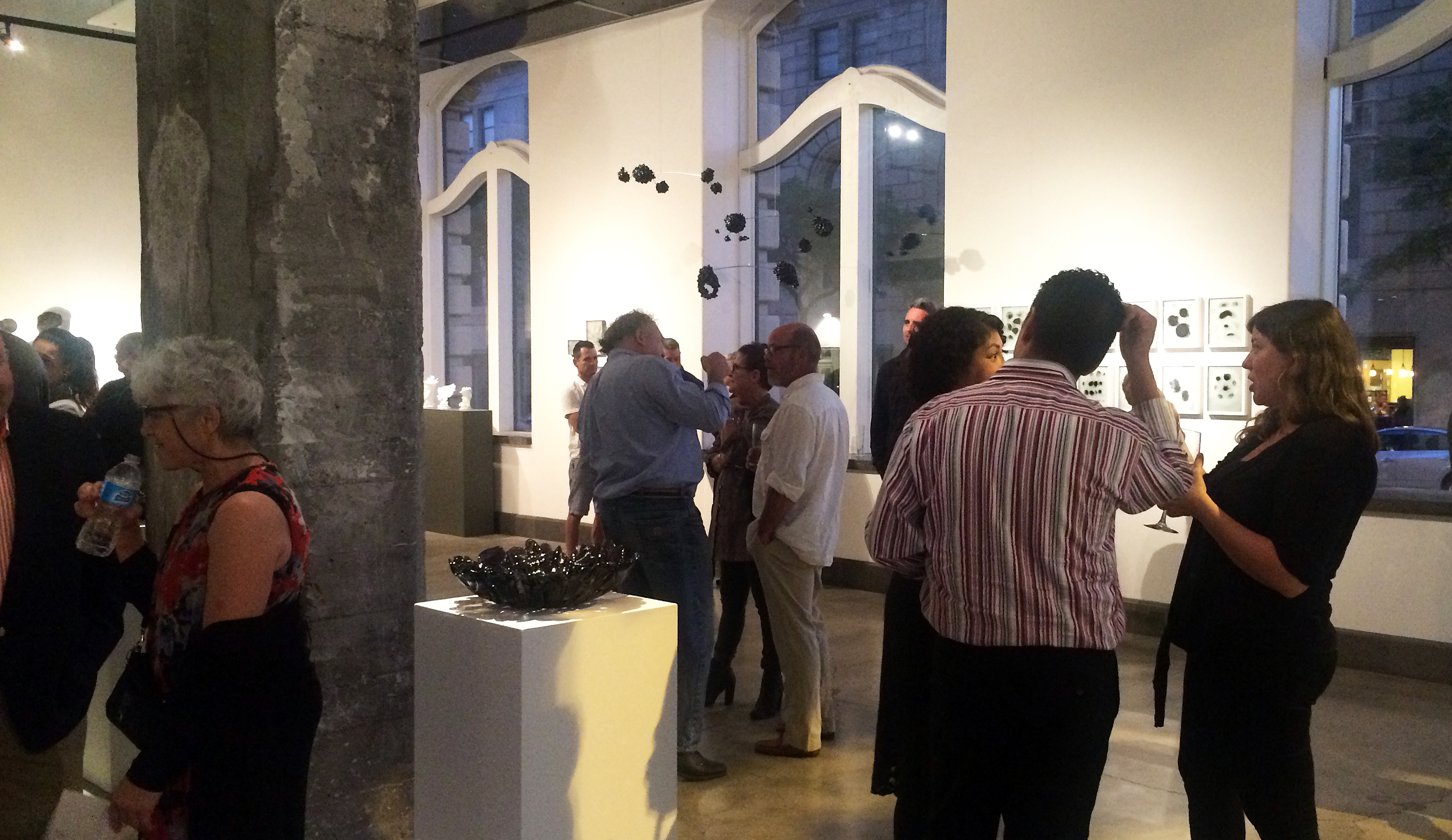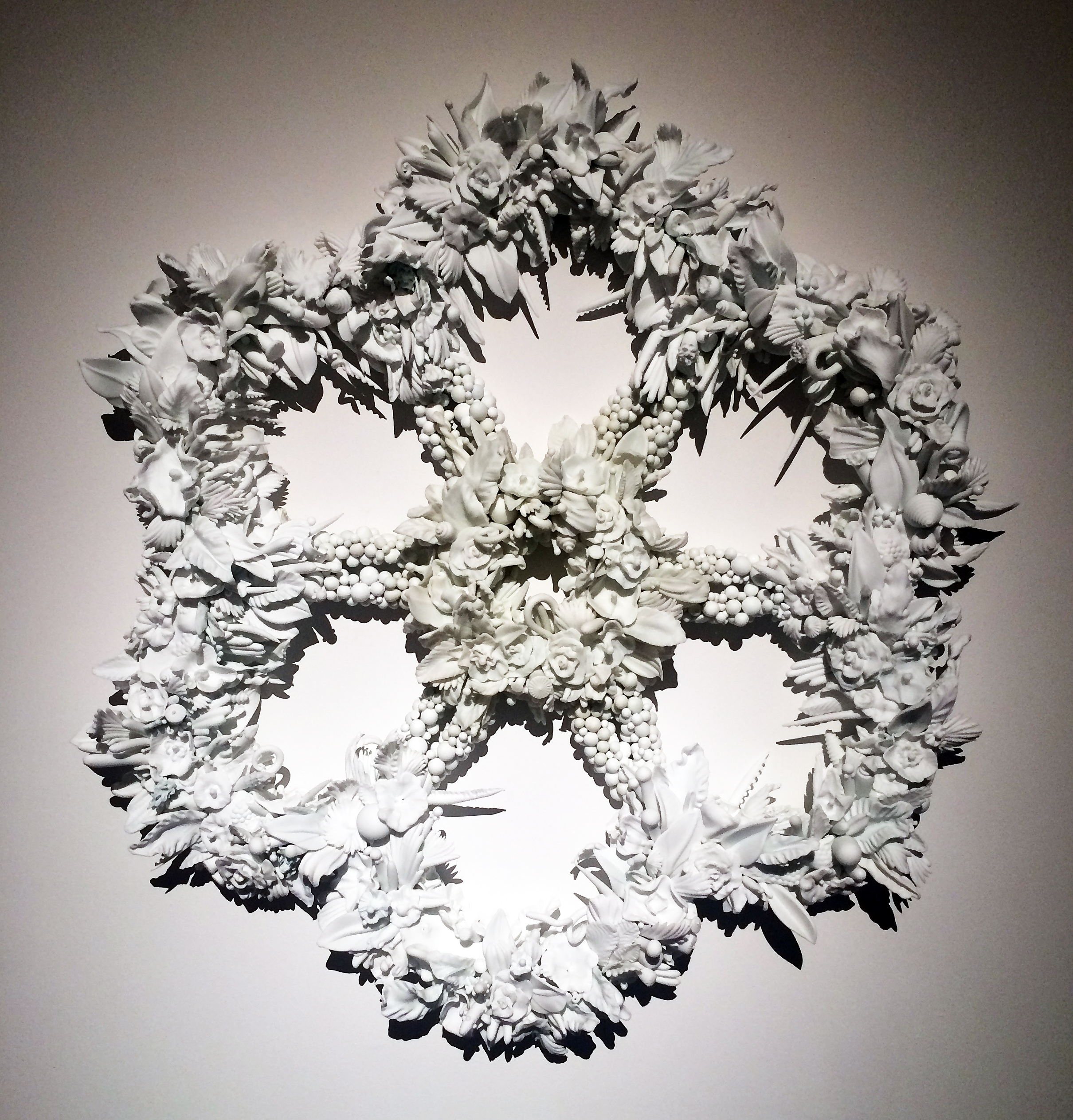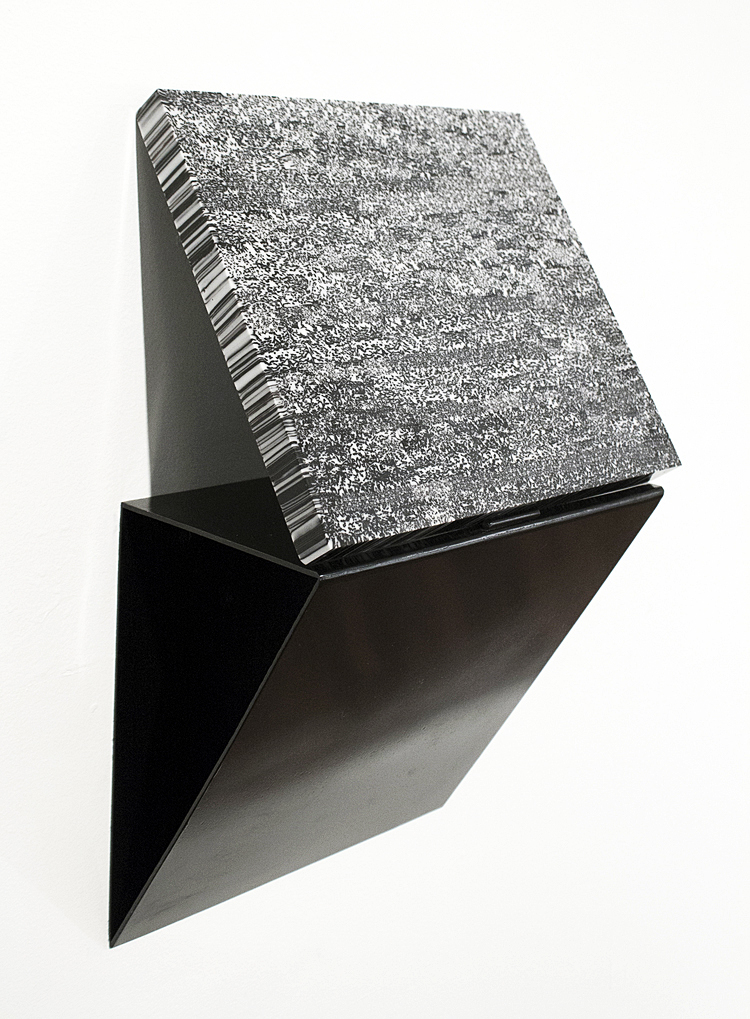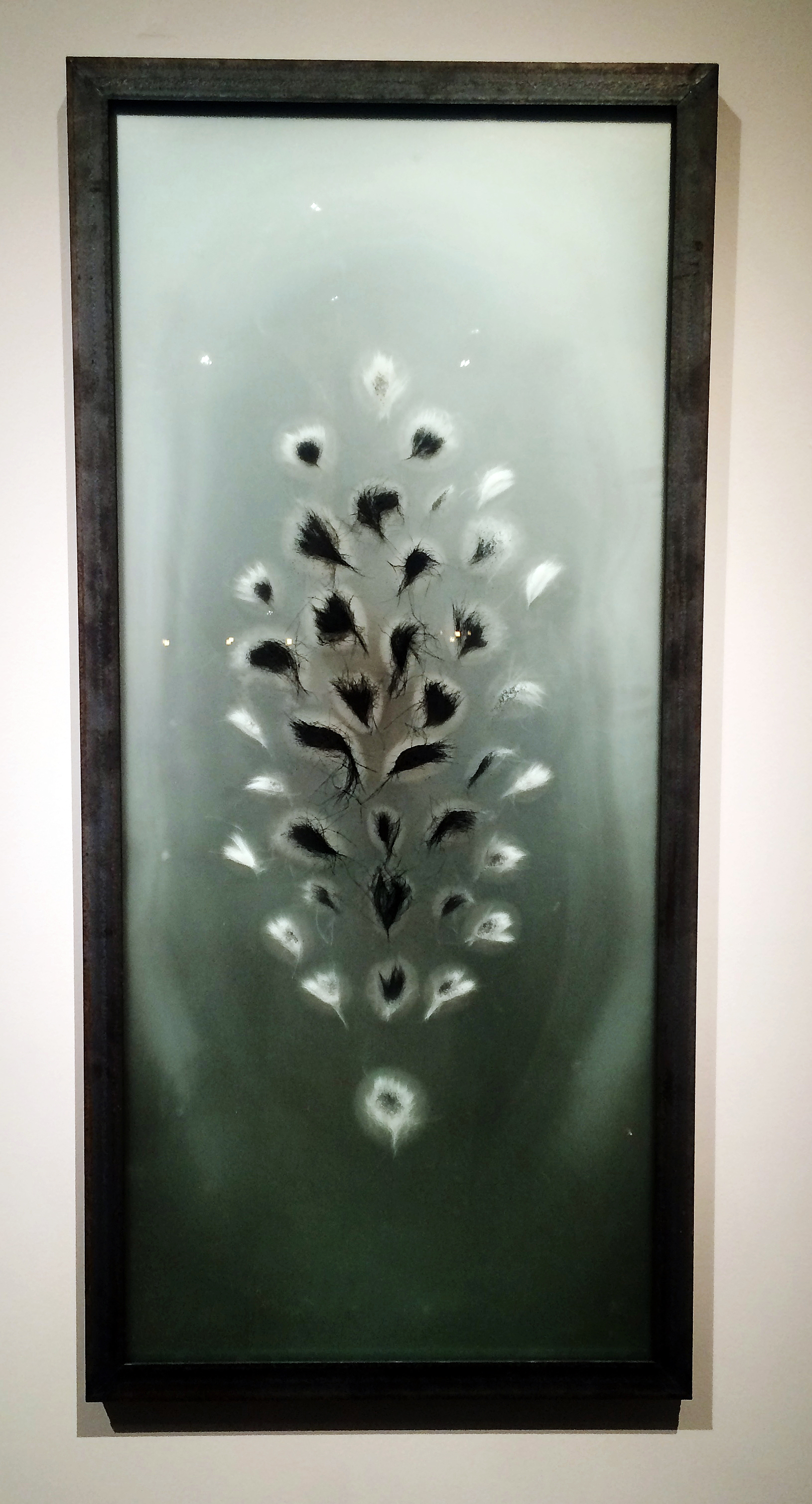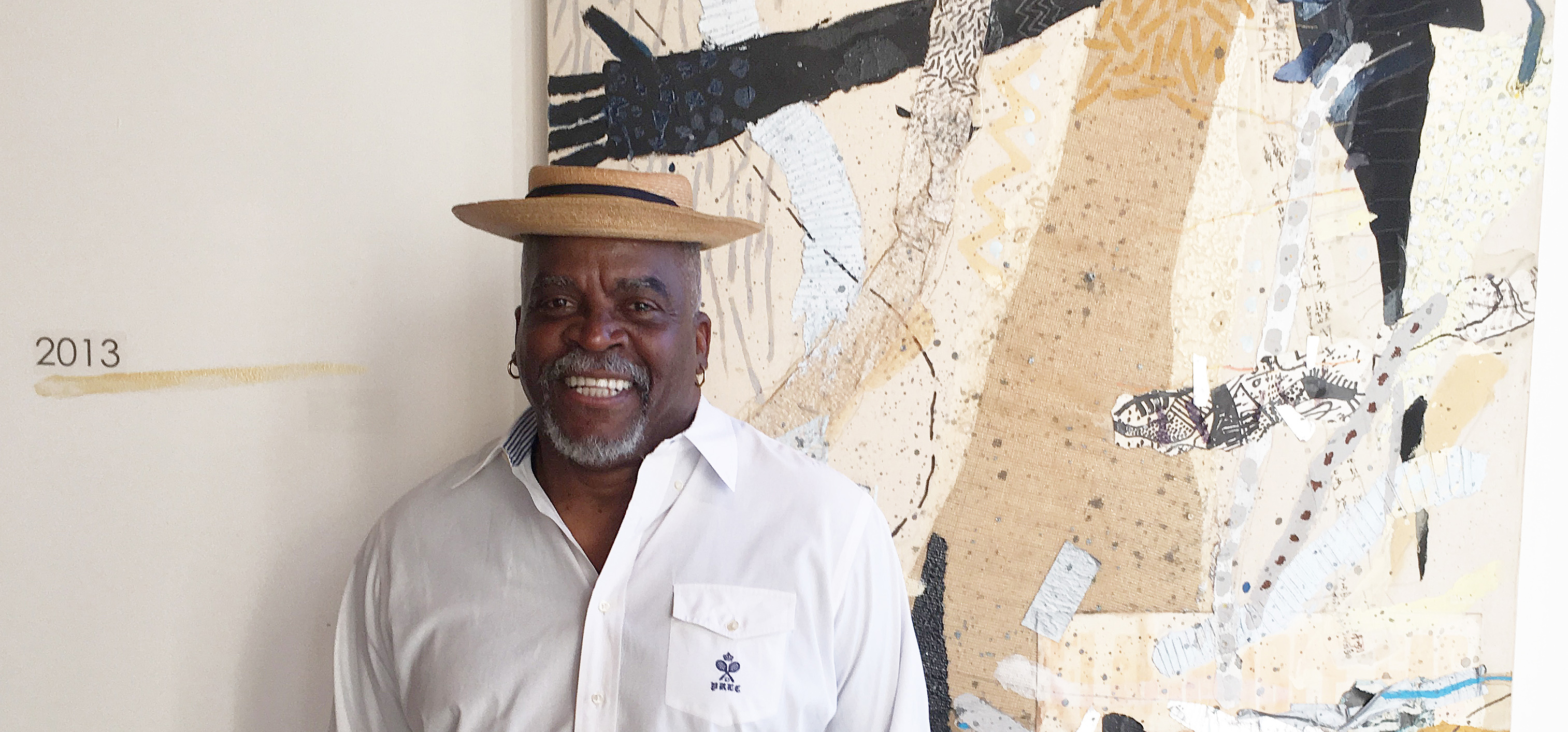
George N’Namdi stands next to work by Detroit artist, Charles McGee, Noah’s Ark # 8, 60 X 45 1984
George N’Namdi opened the current exhibition, 35 Years in celebration of all the N’Namdi galleries since 1981, when he opened his first gallery, Jazzonia, on Harmonie Park in downtown Detroit. I remember that location because the Detroit Artist Market was on Randolph street and myself, and many friends were part of those DAM exhibitions. This exhibition features works collected by George N’Namdi before and after 1981, which includes over 40 artists spanning many genres and mediums.
Educator and art dealer, George R. N’Namdi was born September 12, 1946, in Columbus, Ohio. He attended Columbus East High School in 1965 and went on to graduated from Ohio State University in 1970, before obtaining his Ph.D. in psychology from the University of Michigan in 1974. This exhibition brings together a small selection of work that has been represented in the gallery for a span of near forty years.

Chakiaia Booker, Industrialization, 50 X 59 X 15, 1980
Known for her sculpture made from rubber, and her wearable sculptures, Chakaia Booker was one of the artists supported and exhibited by George N’Namdi in the early eighties. Her work “Echoes in Black, ” was accepted into the Whitney Biennial in 2000. The successful artist exhibits her work at the June Kelly Gallery in New York City and has work in the collection of the Metropolitan Museum of Art.
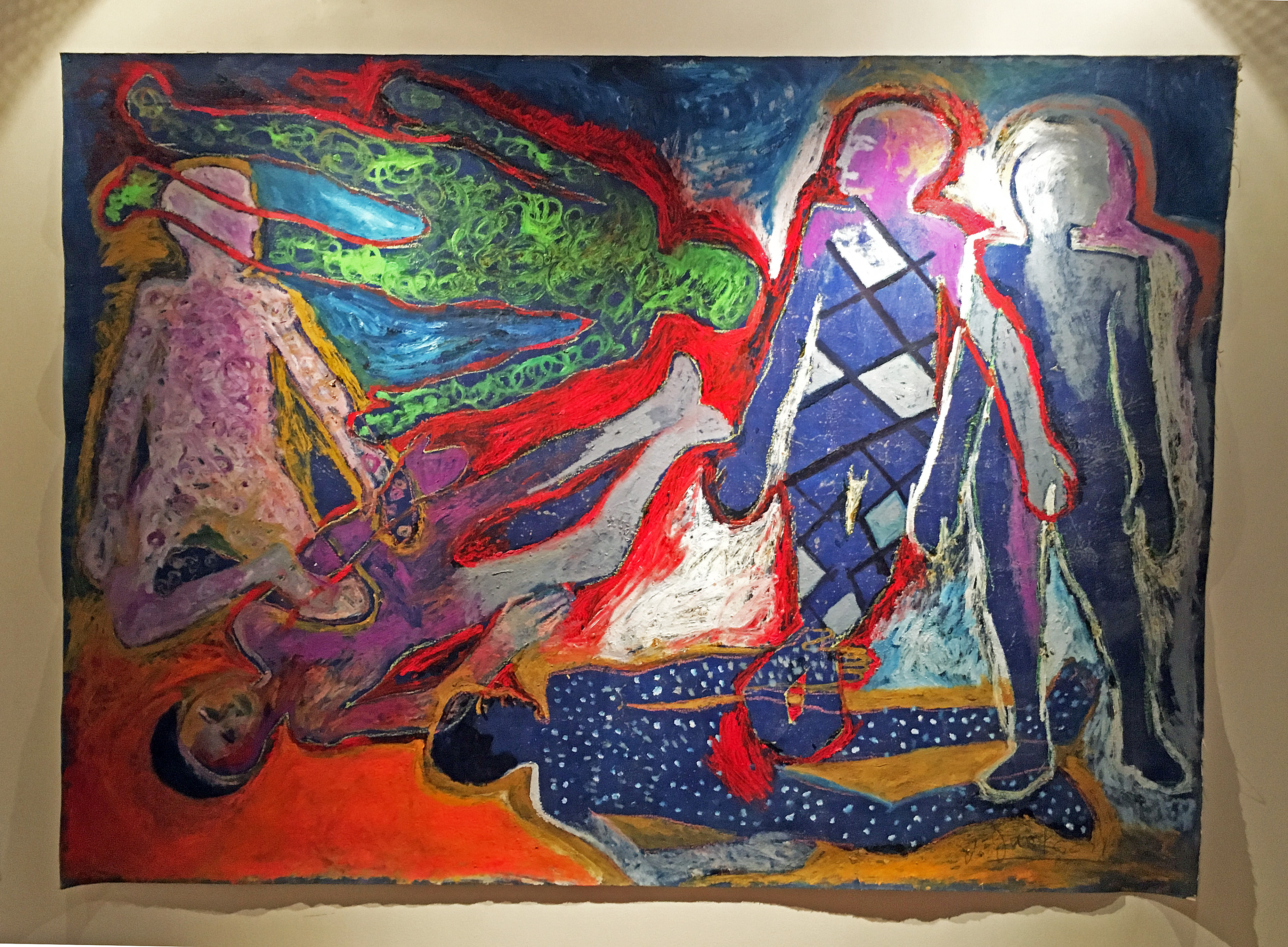
Gerald Jackson, Island People, Mixed Media, 84 X 108, 1985
Born in Chicago, Gerald Jackson gained notice when his work was included in two influential 1970s exhibitions–the 1970 Afro-American Artists: New York and Boston at the Museum of the National Center of Afro-American Artists, Boston, and the 1971 Black Artists: Two Generations at the Newark Museum. Jackson’s Island People is a figurative expressionist work from 1985 where the work outline of figures overlaps within a flatten picture plane.
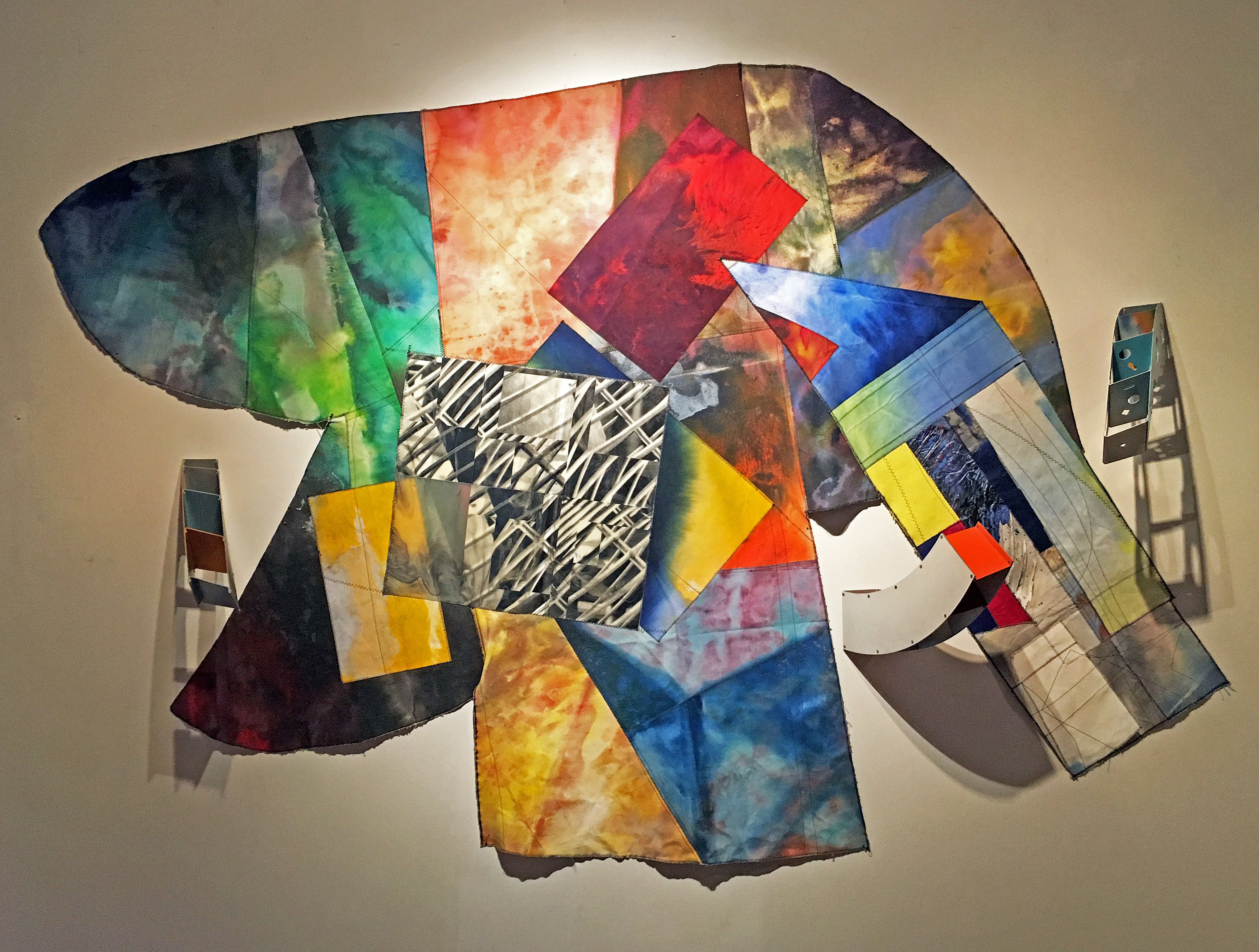
Sam Gilliam, 71X 98 X10, Trade Mark, Mixed Media on Canvas-Aluminum, 1994
Sam Gilliam, the African American artists, who was born in the south, eventually spent his life in Washington DC, where he taught painting at the Maryland Institute College of Art, and at Carnegie Mellon University. Known for his color fieldwork, and a lyrical kind of abstraction, he often worked with shaped canvas and was early to move away from using stretcher bars for his canvases. In the1980s Gilliam’s style changed dramatically to quilted paintings reminiscent of African patchwork quilts from his childhood. In his statement he says, “Only when making the work can I determine the many languages that form the planes on which it is to exist. Like abstract phrases the many intentions of the work (before an audience) passes through an intuitive sieve… The work was not planned, there are ploys, to the way it was laid out and then put together.”
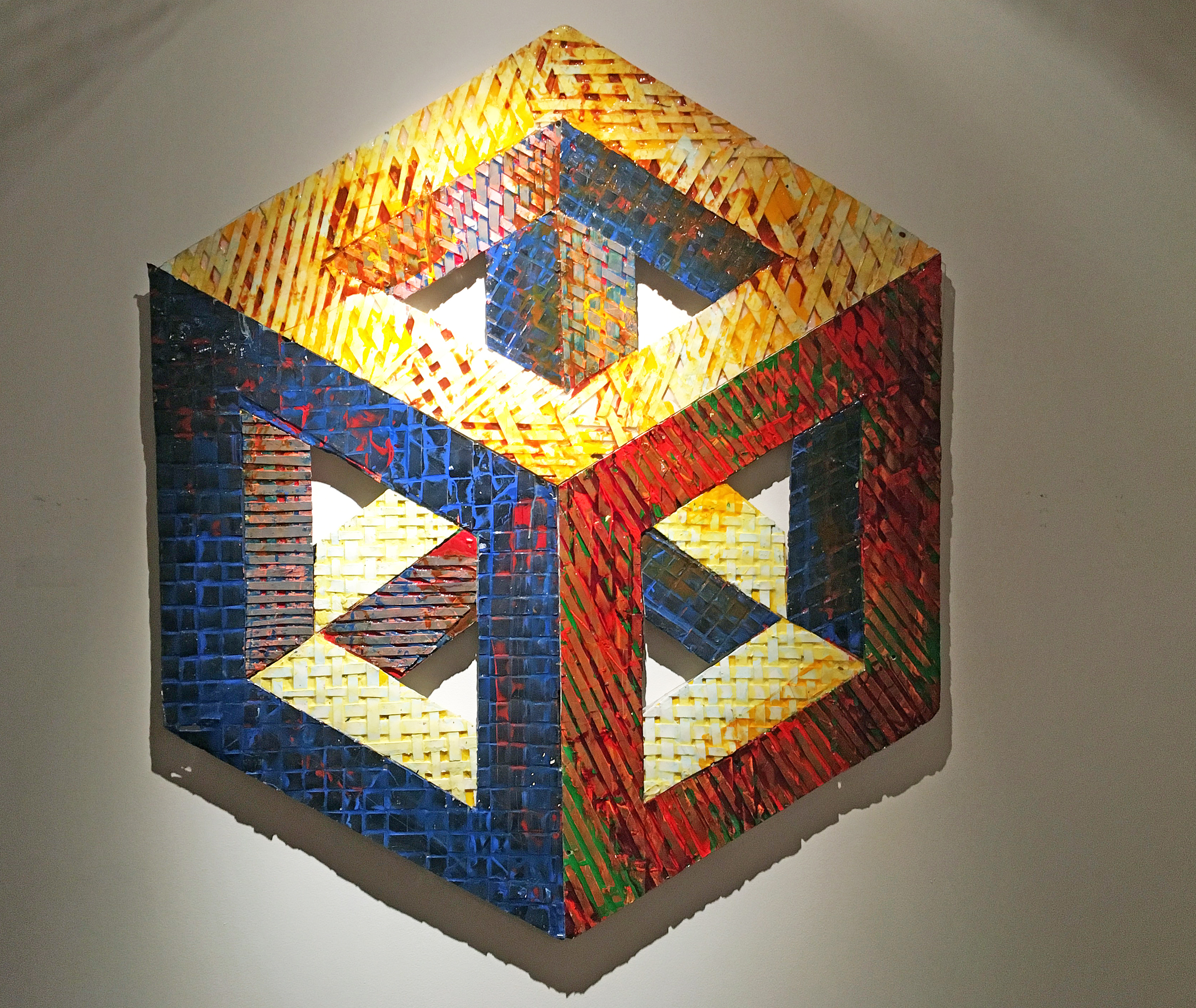
Alvin Loving, Dreams of Amorous, 61 X 51, 1998
Al Loving (1935–2005) was an Abstract Expressionist painter, and one of the few African American artists recognized for his contributions to the movement. Born and raised in Detroit, he was known for his geometric work using bright color and hard-edge line in his arrangement of cubes and rectangles. Loving receive his BFA from the University of Illinois in 1963, and then his MFA from the University of Michigan in 1965, and soon after moved to New York City. In 1968, he had a solo exhibition at the Whitney Museum.
The N’Namdi Collection is one of the finest private collections of African-American art in the United States and combines works covering more than a century of art in many genres. As demonstrated in this exhibition, there as been a commitment by George N’Namdi to the contributions of African art and the discourse surrounding contemporary art in the United States. Looking ahead, N’Namdi said “We are putting together an investment team for restaurants and galleries to create a gallery district on Grand River around Rosa Parks. All this development that is taking place downtown will ultimately begin to spread into our neighborhoods.”


